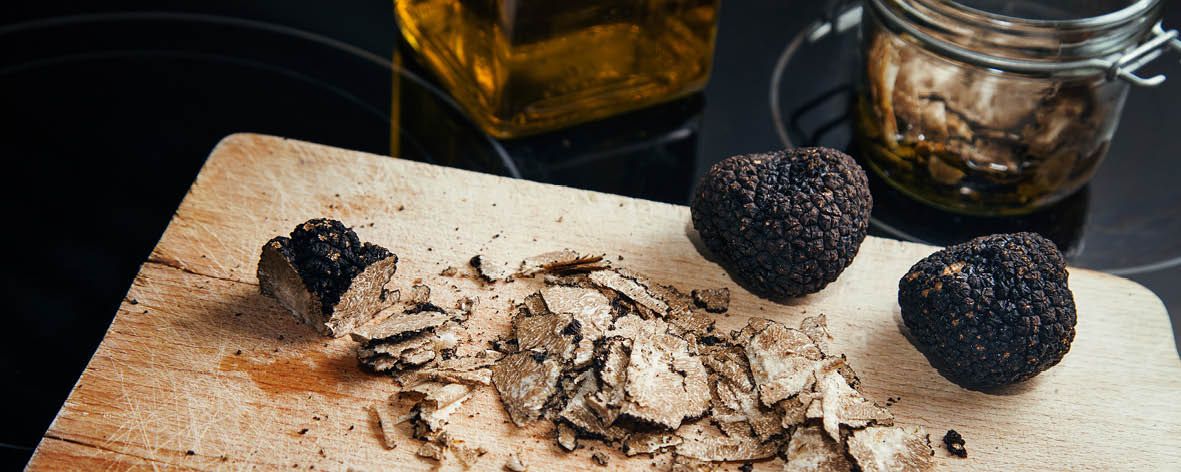All you need to know about truffles … our guide

For the uninitiated truffles may seem like an odd ingredient. A fungus that grows underground, their arresting smell has been described as, among other things, “old socks”. But make no mistake, despite their warty appearance and strange smell, truffles are a highly sought-after culinary delicacy. Chefs and foodies love truffles for their ability to cooperate with the flavours in food to enhance and transform ingredients from everyday to gourmet. Let’s dig deeper (pun intended) to learn more about truffles.
In Tasmania, truffles start to grow beneath the soil in spring. Initially a white colour, the colour changes to black as they mature and it is then that they give off their characteristic aroma. The truffle fungi is hosted by trees; the fungi establishes a symbiotic relationship with a host tree, living on and around the tree roots. They need a host tree because they grow underground and do not have access to sunlight to photosynthesise sugars. They grow in association with fine tree roots that they can draw sugars from, and their even finer roots can share some of the mineral nutrients that the tree wants. Truffles create a “brûlée”, a dead patch of grass around the trunk of the tree which is a sign that there are truffles underground. There are different types of trees that are used to host the truffle fungi in Australia including English oaks, holm oaks and hazelnuts. Truffles prefer soft, loose soil and grow best in climates where there is a warm summer and cold winter with some frost.
Traditionally a product of Europe, truffles were first grown in Australia by Tasmanian Tim Terry in 1999. Since then the truffle industry has grown in Tasmania, Western Australia, South Australia, Victoria, the ACT, Queensland and New South Wales. Commonly animals have been used to find truffles; historically it was pigs however they are often reluctant to give up a truffle, so today dogs are trained to hunt for truffles.
In Tasmania, the truffle season runs from June until August so if you want to enjoy the magic that is fresh Tasmanian truffles you only have a short window. Truffles are a natural flavour enhancer, however over-cooking destroys the delicate smell so if you are new to truffles you can try shaving or grating them onto dishes just before serving - think pasta, mashed potatoes, risottos and scrambled eggs. Our friend Rodney Dunn from the Agrarian Kitchen knows a thing or two about truffles, in fact he has a cookbook dedicated to them which we launched at Hill Street Home a few years ago. Rodney’s book The Truffle Cookbook features a selection of 60 recipes from simple to advanced, but all are totally do-able at home. Why not start your truffle adventure with this Truffled Macaroni and Cheese recipe from Rodney’s book?

